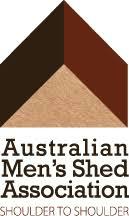Crystals – the on going debate
By Peter Cossins
I have been asked to write an article on the debate regarding the use of other manufacturer’s crystals in your transmitter or receiver. To fully understand the behaviour of crystals and the circuits in which they operate requires a very good knowledge of electronics theory. I will therefore keep this short article as best I can in layman’s terms.
I have had a number of people claiming both success and failure using other manufacturer’s crystals so the issue does not seem clear.
My first advice to anyone asking is that it is probably better to use the manufacturer’s supplied replacements.
If you are going to use other crystals, then range check on the ground achieving better than “normal” range. In the first flights keep the model close in, moving it away gradually until you are sure that the range is adequate. (I would suggest that you use this strategy for a new set as well or after a crash!)
A few basic facts about crystals…
Crystals are a very thin piece of quartz, the physical size and thickness of which has been very finely tailored so that it’s natural mechanical resonance (the frequency at which it vibrates) is at a specific and known frequency.
Crystals exhibit the piezo electric effect. If a crystal is bent, it will produce a small voltage and if a small voltage is applied to a crystal it will bend. This effect enables a crystal to vibrate in an oscillator circuit which provides a small amount of electrical feedback to the crystal, maintaining vibration.
Depending on how the piece of quartz has been cut from the mother crystal, it may prefer to vibrate (oscillate) at a third or fifth overtone, i.e. three or five times its fundamental frequency.
Crystal controlled oscillator circuits are different for fundamental, third or fifth overtone modes.
The actual frequency that the crystal controlled oscillator derives is dependent to a small degree on the effective capacitance the crystal is required to operate with. The effective capacitance is controlled by the nature of the circuit.
Many crystal oscillators have small variable capacitors (trimmers) to adjust the transmitter on frequency.
In addition to the harmonic modes of oscillation, all crystals exhibit what is called series and parallel resonance. Crystal oscillator circuits are different for series or parallel modes of operation.
Some crystals will not work at all in certain circuits.
Summary
The range of your radio system will be optimum when your transmitter and receiver are on frequency. This in turn depends on the circuit in which the crystal is required to operate.
I have not got any specific details at this time of the circuits and modes used in the various common brands of transmitters and receivers. I am constructing some test circuits to do some quantitative analysis on model radio control crystals, but only have a range 36 Mhz JR and one 29 Mhz crystal to test at this stage.
There are obviously a number of variables in crystal oscillator circuits and the frequency at which the work, and there are also some other variables regarding how the “FM” modulation is derived which may effect operation.
The bottom line however is…
- Does the transmitter and receiver work at all with the crystals ???
- Do you have adequate range ???
- If yes to both, then everything looks OK.
- If you want to be as sure as possible, then use only manufacturer’s replacements.








